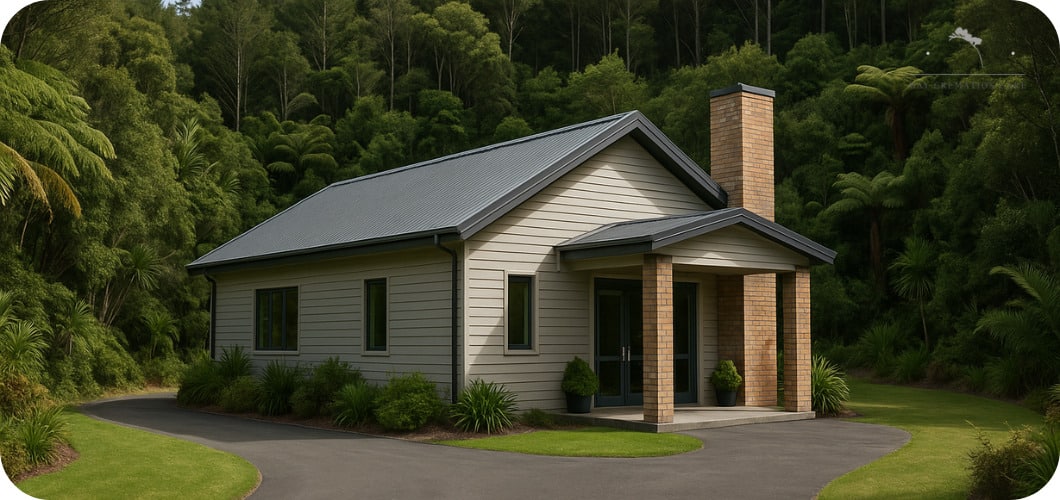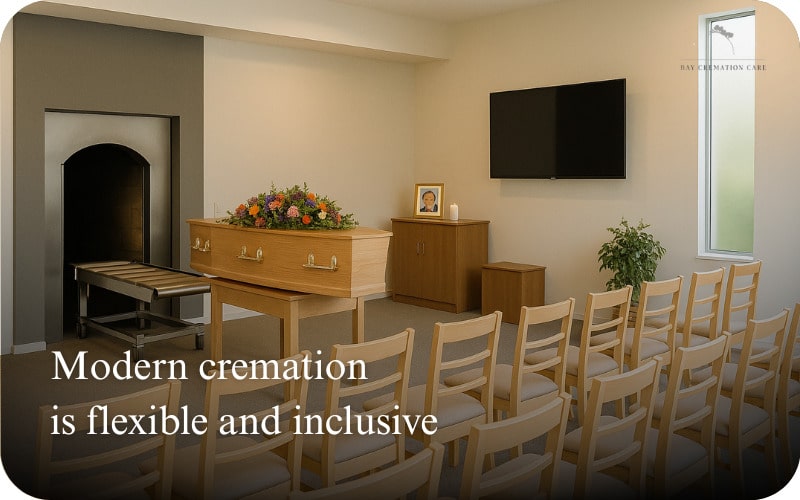
Cremation services have become a common practice in New Zealand, but this was not always the case. The gradual shift from traditional burials to cremation reflects changes in societal norms, religious attitudes, and public policy.
Understanding how cremation developed in New Zealand offers insight into how cultural values have adapted over time.
This article traces the history of cremation in the country, covering the introduction of cremation laws, the establishment of the first crematorium, and the wider social acceptance that followed.

In the early 1900s, burial was considered the standard form of body disposition in New Zealand. Cremation, by contrast, was viewed with caution and even discomfort. The idea of reducing the body to ashes conflicted with the beliefs of many Christian denominations, which largely favoured traditional burial.
There were also concerns among the public about the perceived dignity and morality of cremation.
Despite this resistance, legislative changes laid the groundwork for public acceptance. The Cremation Act of 1964 was a pivotal development. This law made cremation legal but imposed specific rules on how and where it could be carried out.
According to the act, a crematorium could only operate with government approval, and strict documentation was required before a body could be cremated. These conditions helped introduce the practice in a controlled and regulated manner.
Legal recognition was essential for giving cremation social legitimacy. Though the number of cremations remained low at first, the law provided reassurance to families considering the option.
It also allowed medical and public health officials to support cremation as a hygienic alternative to burial, particularly in urban areas where cemetery space was limited.
In 1909, New Zealand saw the establishment of its first crematorium at Karori Cemetery in Wellington. This marked an important step toward public acceptance. The crematorium offered families a space where cremation could take place respectfully and privately, without the need for offshore alternatives.
Early use of the facility was limited.
Only a few cremations occurred each year during the first two decades. Yet, the presence of an official crematorium changed perceptions over time. Gradually, more families began to consider cremation as a viable option.
Funeral directors, healthcare professionals, and religious leaders slowly started to support the practice, especially as cremation became more familiar within public discourse.
This change happened slowly but steadily.
By the mid-20th century, several other crematoria had opened across the country, including in Auckland and Christchurch. These facilities continued to provide respectful and lawful services, helping increase confidence in the process.
The second half of the 20th century saw a noticeable rise in the number of cremations performed in New Zealand. This reflected larger social changes. As secular views became more widespread, fewer people felt bound by the funeral practices of organised religion. People began making more personal choices about how they wished to be remembered and laid to rest.
Urbanisation also played a role. With more people living in cities, the need for space-efficient body disposition methods became more pressing. Burial plots grew increasingly expensive and harder to access in some regions.
Cremation offered a practical alternative.
Another influence was global exposure. As New Zealanders travelled or immigrated, they brought back knowledge of cremation practices in other countries. These experiences made cremation more familiar and acceptable to the general public.
The increased use of cremation led to greater discussion around its meaning and value. Funeral directors began offering more flexible services, and families became more involved in planning ceremonies that reflected individual lives and preferences. This personalisation made cremation appealing to many people.

Today, cremation services are widely accessible throughout New Zealand. Almost every major city and many regional areas now operate one or more crematoria. The services provided have expanded to include memorial planning, ash scattering, urn selection, and digital memorialisation.
Families can choose from various types of ceremonies, whether held in crematorium chapels, private homes, or community halls. This flexibility allows people to tailor their farewells according to personal or cultural preferences.
Providers such as Bay Cremation Care offer a supportive environment for families seeking a dignified and personalised service. Our approach reflects an understanding of local needs and traditions, and our offerings range from direct cremation to full-service farewells with professional guidance at each step.
As more families look for practical and respectful options, the availability of cremation services continues to grow. In rural areas where access was once limited, providers now work to expand their reach through mobile consultation and stronger community ties. This helps ensure that people across the country can make arrangements that suit both personal values and logistical needs.
Cremation is no longer seen as a secondary choice. It often forms part of a carefully considered end-of-life plan. Families are increasingly involved in decisions about how the cremation should be carried out, from selecting music and readings to choosing locations for ash scattering.
These options allow families to create a service that reflects the character and values of the deceased. This trend mirrors broader shifts in funeral practices in NZ, where customisation has become more common.
Families may also choose to incorporate cultural symbols or religious elements that carry meaning for them. Whether through karakia, eulogies, or the selection of venues, these personal touches create a farewell that feels genuine. Providers support these preferences by offering flexibility in planning and delivery.
Increased involvement also helps loved ones feel more connected to the service. For many, this makes the grieving process more manageable and gives a greater sense of closure.
New Zealand’s population is diverse, and this is reflected in attitudes toward cremation. Each cultural group brings its own beliefs and practices to matters of death and remembrance.
Traditionally, Māori customs have preferred burial, with tangihanga forming an essential part of farewell rituals. The body is considered sacred, and returning it to the earth is seen as a respectful act. Historically, cremation was not part of Māori practice.
However, urbanisation and modern life have influenced this perspective. Some Māori families now choose cremation due to practicality, availability, or cost. Even so, many retain important aspects of tikanga, including extended family gatherings and spiritual observances.
When cremation is chosen, efforts are often made to align the process with traditional values. This might include returning ashes to the ancestral land or involving elders in decision-making.
Many Pacific communities continue to prefer burial, seeing it as essential for spiritual and familial reasons. However, as with Māori, a gradual shift is occurring, especially among younger generations and urban families.
Other ethnic and migrant groups may bring their own customs. For example, Hindu traditions embrace cremation, while Islamic and Jewish practices require burial. New Zealand’s cremation services have adapted to meet these varied needs by offering culturally appropriate support.
This flexibility has made cremation a more inclusive option, contributing to its broader acceptance.
The legal structure around cremation remains based on the Cremation Act of 1939, with updates over time. Regulations include documentation requirements, consent procedures, and operational standards for crematoria.
Under New Zealand law, a medical certificate is required before cremation can proceed. In some cases, a coroner must review the death. These steps help maintain accountability and public trust in cremation services.
The law also provides guidance on ash handling, crematorium location, and record-keeping. These measures support transparency and respect for the deceased.
Crematoria must operate within the standards set by local councils and national legislation. Regular inspections, updated operating licenses, and professional training are expected. These requirements form part of ongoing efforts to keep cremation lawful and respectful.
By maintaining a clear and stable legal environment, New Zealand supports public confidence in the cremation process.

Environmental factors have become part of the discussion around cremation. While traditional cremation involves energy use and emissions, steps are being taken to reduce the environmental impact. Some crematoria now use lower-emission technologies or offer carbon offset programs.
There is also growing interest in alternative methods, such as alkaline hydrolysis, which uses water and heat instead of fire. While not yet widely available in New Zealand, this approach could offer a more environmentally friendly option in the future.
These developments show a continued effort to balance respect for the deceased with care for the environment.
According to recent industry data, cremation now accounts for over 70% of all body dispositions in New Zealand. This figure reflects broader cremation trends in New Zealand, where practicality, affordability, and cultural adaptation have all played a role.
Families now view cremation as a first-choice option rather than an alternative. This shift has influenced how funeral homes, local councils, and policymakers plan and provide services. The emphasis is now on personalisation, transparency, and quality care.
Cremation also fits with changing views on life and death. Many people prefer simpler arrangements, more private memorials, or environmentally conscious choices. Cremation allows for these needs to be met.
The role of cremation services today goes beyond the act of cremation. Funeral providers work with families to plan, coordinate, and carry out end-of-life arrangements that respect the wishes of the deceased.
Support can include everything from paperwork and logistics to grief counselling and ceremonial planning. Providers are trained to help people through what can be a difficult and emotional time, offering guidance that is compassionate and respectful.
As demand grows, providers are focusing on maintaining high standards. This includes investing in staff training, facility upgrades, and cultural competence. Feedback from families plays a part in improving services and addressing concerns.
Regulated providers, such as those associated with the Funeral Directors Association of New Zealand, must follow specific codes of conduct. These standards help build trust in the sector and protect families.
The history of cremation in New Zealand tells a story of change—rooted in law, guided by society, and shaped by cultural values. From the cautious introduction of cremation laws to the widespread availability of cremation services today, the practice has steadily become part of how many New Zealanders say goodbye.
As preferences continue to evolve, cremation will likely remain a key part of the country’s approach to end-of-life care. By offering respectful, lawful, and culturally sensitive options, the industry supports families through one of life’s most difficult moments.
At Bay Cremation Care, we are dedicated to providing everyone with options for planning an affordable yet meaningful funeral service at our funeral home in Tauranga.
We are passionate about doing everything we can to give your loved one a beautiful, respectful, memorable farewell and alleviating your pain in this challenging time.
We believe that a funeral plays a vital role in offering closure and catharsis after a loss. That is why we will go out of our way to provide you with caring, attentive service.
Based in the Bay of Plenty, Bay Cremation Care has been offering the people of Tauranga and its surrounding areas compassionate care and support in their most challenging times. The company is run by Alistair Black, a fully qualified Funeral Director, Embalmer and member of the Funeral Directors Association of New Zealand (FDANZ) and NZ Embalmers Association.
